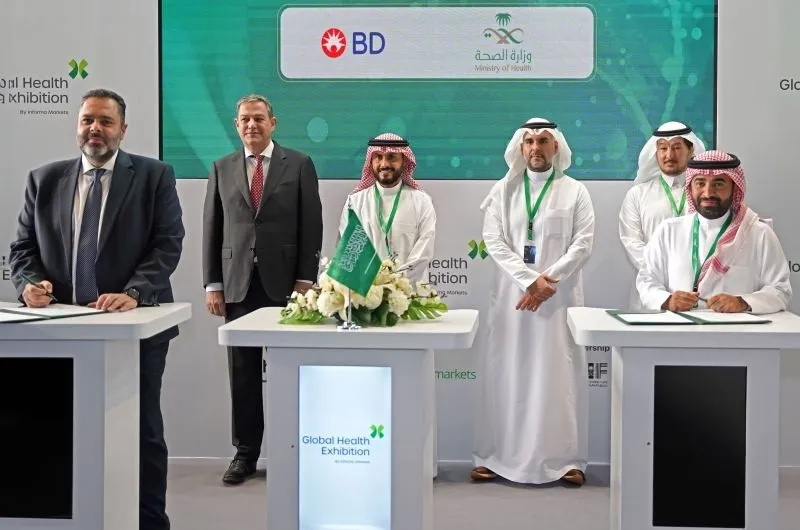In a groundbreaking move set to reshape the landscape of pharmaceutical research and development in Asia, AstraZeneca has announced a staggering $2.5 billion investment in Beijing over the next five years. This historic commitment will see the establishment of AstraZeneca’s sixth global strategic R&D center, positioned to spearhead early-stage research and clinical development with cutting-edge technology, innovative partnerships, and a bold vision for the future of medicine. The new center, located in the Beijing International Pharmaceutical Innovation Park, not only signals a robust expansion of AstraZeneca’s global R&D footprint but also underscores China’s rising prominence as a global biotech hub.
Expanding Horizons: The Strategic Importance of Beijing
Over recent years, China has emerged as a nexus for pharmaceutical innovation and biotechnology, driven by strong government support, a rapidly growing market, and an increasingly sophisticated scientific community. With this in mind, AstraZeneca’s decision to anchor its new R&D center in Beijing is far from coincidental. The investment is structured as a strategic partnership with the Beijing Municipal Government and the Beijing Economic-Technological Development Area Administrative Office, signaling mutual trust and a shared commitment to accelerate medical breakthroughs.
The Beijing International Pharmaceutical Innovation Park is already renowned for fostering collaborations between academia, industry, and regulatory bodies, offering a fertile ecosystem where advanced research can thrive. By embedding its operations in this dynamic environment, AstraZeneca is not only positioning itself to capitalize on local talent and innovation but also to set new benchmarks in global health research.
Cutting-Edge Research and Technological Innovation
At the heart of the new center will be a state-of-the-art artificial intelligence (AI) and data science laboratory. This facility is designed to harness the potential of big data and machine learning to identify novel therapeutic targets, optimize drug design, and streamline clinical development processes. AI-driven platforms have revolutionized drug discovery over the past decade, accelerating timelines from bench to bedside and enhancing precision in patient care. AstraZeneca’s move to integrate these technologies at its Beijing center underscores a broader industry trend toward digital transformation in healthcare.
The center is expected to become a nexus for early-stage research, with multidisciplinary teams working on high-risk, high-reward projects that could lead to groundbreaking treatments for complex diseases. Beyond traditional small molecule drugs, the facility is poised to explore innovative modalities such as gene therapies, cell-based treatments, and next-generation vaccines.
Strategic Collaborations: Strengthening the Innovation Ecosystem
A key aspect of the investment involves forging strong ties with local biotech firms. AstraZeneca has inked several pivotal agreements with leading Chinese companies, including Harbour BioMed, Syneron Bio, and BioKangtai. Each partnership is carefully structured to leverage the unique strengths and expertise of the local firms while complementing AstraZeneca’s global research capabilities.
- Harbour BioMed Collaboration:
AstraZeneca has entered into a collaboration and licensing agreement with Harbour BioMed, focusing on the discovery of multi-specific antibodies. These novel therapeutic agents can bind simultaneously to multiple targets, potentially offering enhanced efficacy and reduced resistance compared to conventional monoclonal antibodies. Multi-specific antibodies are emerging as a key area in oncology and immunology, and this partnership is expected to push the boundaries of what’s possible in targeted therapy. - Syneron Bio Partnership:
In a parallel effort, AstraZeneca is collaborating with Syneron Bio to develop macro-cyclic peptides. These molecules are celebrated for their stability and potency, making them promising candidates for tackling diseases that have so far eluded effective treatment. The macro-cyclic peptides platform offers versatility in drug design, with applications ranging from cancer to infectious diseases, potentially filling significant gaps in the current therapeutic landscape. - BioKangtai Joint Venture:
Perhaps the most ambitious of the agreements is the joint venture with BioKangtai, which will see the creation of AstraZeneca’s first vaccine manufacturing facility in China. Located in the Beijing BioPark, this facility is poised to produce vaccines not only for respiratory infections but also for a broader spectrum of infectious diseases. This initiative comes at a time when global demand for advanced vaccine technologies is surging—a trend catalyzed by the recent pandemic experiences and the constant threat of emerging pathogens.
A Boost for Local and Global Economies
The planned expansion is expected to have far-reaching implications both within China and on the global stage. AstraZeneca’s Beijing center is projected to grow its local workforce to 1,700 employees, which will provide a significant boost to the local job market. Beyond direct employment, the center is set to create a ripple effect, attracting ancillary industries and ancillary services that support high-tech research and manufacturing.
Government officials have lauded the investment, emphasizing that such large-scale projects are instrumental in positioning Beijing—and China as a whole—as a leader in global pharmaceutical innovation. This move is also seen as a reinforcement of China’s long-term strategy to become a self-sufficient powerhouse in healthcare innovation, reducing reliance on imported drugs and advanced technologies.
The Broader Context: AstraZeneca’s Global Strategy
This investment in Beijing is part of AstraZeneca’s broader strategic vision to decentralize its R&D operations and tap into emerging markets. Over the past decade, the company has steadily increased its investments in Asia, recognizing the region’s dynamic research environment and immense market potential. Earlier, the launch of AstraZeneca’s R&D center in Shanghai set the stage for subsequent initiatives in the region, with Beijing now taking center stage as the hub for next-generation research.
AstraZeneca’s global strategy has always been underpinned by the principle of “innovation through collaboration.” By partnering with local biotech companies and academic institutions, the company aims to bridge the gap between basic research and clinical application. The integration of AI and digital technologies further accentuates this approach, as data-driven methodologies can significantly reduce the time and cost associated with drug development.
Deepening Ties with Chinese Academia and Hospitals
In addition to its collaborations with biotech companies, AstraZeneca is extending its partnerships to include leading Chinese academic and medical institutions. One notable collaboration is with the Beijing Cancer Hospital, where the focus will be on translational research and clinical development. By combining the hospital’s deep clinical insights with AstraZeneca’s technological expertise, both parties aim to accelerate the discovery and validation of novel cancer treatments.
This joint effort is reflective of a growing trend in global healthcare—integrating research and clinical practice to create a seamless pipeline from discovery to patient care. The collaboration with Beijing Cancer Hospital is expected to open new avenues in personalized medicine, where patient-specific data can drive tailored treatment strategies, ultimately leading to improved outcomes and reduced side effects.
Embracing the Future: Innovation in a Post-Pandemic World
The global health landscape has evolved dramatically in recent years, largely due to the lessons learned from the COVID-19 pandemic. Pharmaceutical companies worldwide have re-evaluated their research priorities, investing heavily in vaccine development, rapid diagnostic tools, and digital health technologies. AstraZeneca’s new R&D center in Beijing is a direct response to these shifting paradigms, placing the company at the forefront of efforts to develop resilient, future-proof healthcare solutions.
This proactive stance is critical in a world where emerging infectious diseases and chronic conditions continue to pose significant challenges. The focus on respiratory vaccines, as highlighted in the joint venture with BioKangtai, is particularly timely given the ongoing concerns about viral outbreaks. By enhancing its capabilities in vaccine research and manufacturing, AstraZeneca is not only safeguarding public health but also ensuring that its innovations reach millions of people across the globe.
AI, Big Data, and the Revolution in Drug Discovery
One of the most exciting aspects of the new Beijing center is its commitment to harnessing the power of AI and big data. In recent years, AI has revolutionized drug discovery by predicting molecular behavior, identifying potential drug candidates, and even foreseeing adverse reactions. This technology allows researchers to simulate thousands of chemical interactions in silico, significantly expediting the pre-clinical phase of drug development.
The integration of AI into AstraZeneca’s research paradigm will enable the company to streamline the discovery process, optimize clinical trial designs, and ultimately bring new therapies to market faster. Furthermore, the data science lab will serve as a central hub for analyzing patient data from across China and beyond, creating a rich repository of insights that can drive personalized treatment approaches. This confluence of digital technology and life sciences is expected to set a new standard in how modern pharmaceuticals are developed.
Economic and Policy Implications
AstraZeneca’s massive investment in Beijing is not only a win for the company but also a significant boost for the Chinese economy. Such high-profile investments tend to stimulate the local ecosystem by encouraging other multinational companies to explore similar opportunities in the region. The move is also likely to attract further venture capital and government support for biotech startups, potentially creating a virtuous cycle of innovation and growth.
From a policy perspective, the partnership between AstraZeneca and the Beijing Municipal Government reinforces the government’s commitment to fostering a world-class biotech environment. Chinese policymakers have been steadily working to streamline regulatory processes, enhance intellectual property protections, and provide financial incentives for high-tech investments. These efforts are aimed at attracting global players and transforming China into a leader in scientific innovation. The successful integration of AstraZeneca’s operations into this ecosystem could serve as a model for future collaborations between multinational corporations and local governments.
Addressing Global Health Disparities
Another critical aspect of this initiative is its potential to address long-standing global health disparities. By establishing a major R&D hub in Beijing, AstraZeneca is contributing to the decentralization of pharmaceutical research—a development that could have profound implications for emerging markets. The new center is expected to focus on diseases that disproportionately affect populations in low- and middle-income countries, including various infectious diseases and certain types of cancer. This inclusive approach aligns with global health initiatives that emphasize equitable access to medical innovations, ensuring that breakthroughs in science benefit a broader swath of humanity.
Moreover, the joint venture with BioKangtai on vaccine production is a strategic move aimed at bolstering regional self-sufficiency in vaccine manufacturing. In a post-pandemic world where vaccine inequity has been a major challenge, increasing local production capabilities is essential for rapid response to future outbreaks. By enhancing manufacturing capacities in China, AstraZeneca is not only strengthening its supply chain resilience but also contributing to global efforts to make life-saving vaccines more accessible.
Navigating the Competitive Landscape
The pharmaceutical industry is currently undergoing rapid transformation, with intense competition between global giants and emerging local players. AstraZeneca’s aggressive investment in Beijing is a clear signal of its intent to maintain a competitive edge by tapping into the innovation potential of Asia. Local companies such as Harbour BioMed, Syneron Bio, and BioKangtai have already demonstrated impressive capabilities in niche areas of biotech research. By aligning with these trailblazers, AstraZeneca is effectively integrating itself into the local innovation network and gaining early access to promising technologies and therapeutic candidates.
This strategic positioning will likely provide AstraZeneca with invaluable insights into regional disease patterns and treatment responses, data that can be leveraged to fine-tune its global R&D strategies. In an industry where the speed of innovation is often the difference between market leadership and obsolescence, such local insights are a crucial competitive advantage.
Looking Ahead: A Vision for the Next Decade
AstraZeneca’s commitment to invest $2.5 billion in its Beijing center is more than just a financial transaction—it is a vision for the future of healthcare. The initiative is expected to yield transformative results in drug discovery, clinical development, and manufacturing. With a focus on AI-driven research, multi-disciplinary collaborations, and strategic local partnerships, the center is set to become a beacon of innovation that will guide the evolution of global health strategies for years to come.
The next decade is poised to see a dramatic shift in the way pharmaceuticals are developed and delivered. AstraZeneca’s new center is expected to be at the forefront of this shift, championing innovations that will redefine patient care and set new industry standards. As the global community grapples with evolving health challenges, the center’s outputs—ranging from breakthrough drugs to next-generation vaccines—could play a pivotal role in shaping a healthier, more resilient future for all.
Challenges and Opportunities in a Dynamic Environment
Despite the significant promise, the road ahead is not without challenges. Integrating cutting-edge digital technologies such as AI into traditional drug discovery workflows requires substantial investment in infrastructure, talent acquisition, and regulatory adaptation. Ensuring data privacy, managing intellectual property rights, and navigating complex regulatory frameworks across multiple jurisdictions will demand careful planning and coordination. However, these challenges also present opportunities for innovation in governance, risk management, and operational efficiency.
AstraZeneca’s robust history of global collaborations and its deep-rooted expertise in both scientific research and regulatory navigation place it in an excellent position to tackle these hurdles. The company’s experience in managing large-scale projects and its proven track record in delivering life-changing therapies add layers of confidence that the new Beijing center will overcome these obstacles and emerge as a trailblazer in the new era of pharmaceutical innovation.
The Human Element: Empowering Talent and Fostering Innovation
Central to the success of the new R&D center will be the people behind the science. AstraZeneca’s plan to grow its Beijing workforce to 1,700 employees reflects a strategic commitment to talent acquisition and development. This significant hiring initiative will not only provide jobs for thousands of local professionals but also create a dynamic environment where ideas and expertise converge to push the boundaries of medical science.
The center is expected to host an array of professionals, including research scientists, data analysts, clinical trial specialists, and regulatory experts. By cultivating a diverse and multidisciplinary team, AstraZeneca is laying the foundation for a collaborative culture that fosters innovation and creativity. Furthermore, partnerships with local universities and research institutes will help nurture the next generation of scientists, ensuring a steady pipeline of talent to sustain long-term growth and innovation.
Industry Reactions and Market Impact
The announcement has sparked considerable buzz within both the pharmaceutical industry and financial markets. Analysts view AstraZeneca’s bold investment as a strategic maneuver to secure long-term leadership in the highly competitive global R&D arena. The move is anticipated to drive positive sentiment among investors, while also prompting competitors to re-examine their own regional strategies. In an industry where technological breakthroughs and regulatory successes can rapidly alter market dynamics, such a large-scale commitment is both a statement of intent and a catalyst for future innovation.
Industry experts have lauded the initiative as a win-win for all parties involved. The collaboration between a global pharmaceutical powerhouse and agile, local biotech innovators is seen as a model for how cross-border partnerships can yield transformative results. Moreover, the integration of advanced digital technologies and the focus on addressing regional health challenges are likely to set new benchmarks in pharmaceutical R&D that could ripple across the industry.
Conclusion: A New Chapter in Global Pharma Innovation
AstraZeneca’s $2.5 billion investment in a new global R&D center in Beijing represents a seminal moment in the evolution of the pharmaceutical industry. With its blend of technological innovation, strategic partnerships, and a deep commitment to nurturing local talent, the initiative is poised to usher in a new era of scientific discovery and patient care. As the center prepares to open its doors within the next five years, it carries with it the promise of breakthrough treatments, enhanced collaboration, and a vision of global health that is more inclusive and forward-thinking than ever before.
In an era marked by rapid technological change and evolving health challenges, AstraZeneca’s bold leap into Beijing is not just about expanding its global footprint—it is about redefining the future of healthcare. By integrating advanced AI, fostering strong local partnerships, and committing significant resources to early-stage research, AstraZeneca is setting the stage for a future where medical innovation knows no boundaries. As stakeholders across the industry watch with keen interest, the new R&D center is expected to become a focal point for cutting-edge research that could ultimately lead to life-changing breakthroughs for millions of people worldwide.
The center’s success will hinge on its ability to navigate complex regulatory environments, integrate disruptive technologies, and cultivate a collaborative culture that bridges global expertise with local insights. If successful, AstraZeneca’s venture in Beijing could serve as a template for future investments, encouraging other multinational companies to invest in emerging markets and further democratize the landscape of pharmaceutical research.
Ultimately, this ambitious project is more than just an investment—it is a commitment to a better future, a future where science and innovation converge to solve some of the most pressing health challenges of our time. As the world watches AstraZeneca’s next chapter unfold, one thing is clear: the center in Beijing is set to play a pivotal role in shaping the future of global healthcare, driving innovation that will resonate for generations to come.
Ready to take your career to the next level? Join our dynamic courses: ACCA, HESI A2, ATI TEAS 7 , HESI EXIT , NCLEX – RN and NCLEX – PN, Financial Literacy!🌟 Dive into a world of opportunities and empower yourself for success. Explore more at Serrari Ed and start your exciting journey today! ✨
Photo source: Google
By: Montel Kamau
Serrari Financial Analyst
26th March, 2025
Article, Financial and News Disclaimer
The Value of a Financial Advisor
While this article offers valuable insights, it is essential to recognize that personal finance can be highly complex and unique to each individual. A financial advisor provides professional expertise and personalized guidance to help you make well-informed decisions tailored to your specific circumstances and goals.
Beyond offering knowledge, a financial advisor serves as a trusted partner to help you stay disciplined, avoid common pitfalls, and remain focused on your long-term objectives. Their perspective and experience can complement your own efforts, enhancing your financial well-being and ensuring a more confident approach to managing your finances.
Disclaimer: This article is for informational purposes only and does not constitute financial advice. Readers are encouraged to consult a licensed financial advisor to obtain guidance specific to their financial situation.
Article and News Disclaimer
The information provided on www.serrarigroup.com is for general informational purposes only. While we strive to keep the information up to date and accurate, we make no representations or warranties of any kind, express or implied, about the completeness, accuracy, reliability, suitability, or availability with respect to the website or the information, products, services, or related graphics contained on the website for any purpose. Any reliance you place on such information is therefore strictly at your own risk.
www.serrarigroup.com is not responsible for any errors or omissions, or for the results obtained from the use of this information. All information on the website is provided on an as-is basis, with no guarantee of completeness, accuracy, timeliness, or of the results obtained from the use of this information, and without warranty of any kind, express or implied, including but not limited to warranties of performance, merchantability, and fitness for a particular purpose.
In no event will www.serrarigroup.com be liable to you or anyone else for any decision made or action taken in reliance on the information provided on the website or for any consequential, special, or similar damages, even if advised of the possibility of such damages.
The articles, news, and information presented on www.serrarigroup.com reflect the opinions of the respective authors and contributors and do not necessarily represent the views of the website or its management. Any views or opinions expressed are solely those of the individual authors and do not represent the website's views or opinions as a whole.
The content on www.serrarigroup.com may include links to external websites, which are provided for convenience and informational purposes only. We have no control over the nature, content, and availability of those sites. The inclusion of any links does not necessarily imply a recommendation or endorsement of the views expressed within them.
Every effort is made to keep the website up and running smoothly. However, www.serrarigroup.com takes no responsibility for, and will not be liable for, the website being temporarily unavailable due to technical issues beyond our control.
Please note that laws, regulations, and information can change rapidly, and we advise you to conduct further research and seek professional advice when necessary.
By using www.serrarigroup.com, you agree to this disclaimer and its terms. If you do not agree with this disclaimer, please do not use the website.
www.serrarigroup.com, reserves the right to update, modify, or remove any part of this disclaimer without prior notice. It is your responsibility to review this disclaimer periodically for changes.
Serrari Group 2025












